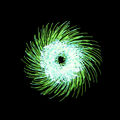Template:Selected anniversaries/March 19: Difference between revisions
No edit summary |
No edit summary |
||
| Line 1: | Line 1: | ||
<gallery> | <gallery> | ||
||1685: René-François Walter de Sluse dies ... mathematician and churchman. The Conchoid of de Sluze is named after him. | ||1685: René-François Walter de Sluse dies ... mathematician and churchman. The Conchoid of de Sluze is named after him. Pic. | ||
||1782: Baron Wilhelm von Biela born ... German-Austrian military officer and amateur astronomer. Pic. | ||1782: Baron Wilhelm von Biela born ... German-Austrian military officer and amateur astronomer. Pic. | ||
| Line 6: | Line 6: | ||
File:Filippo Mazzei.jpg|link=Philip Mazzei (nonfiction)|1816: Physician and activist [[Filippo Mazzei (nonfiction)|Filippo Mazzei]] dies. He acted as an agent to purchase arms for Virginia during the American Revolutionary War. | File:Filippo Mazzei.jpg|link=Philip Mazzei (nonfiction)|1816: Physician and activist [[Filippo Mazzei (nonfiction)|Filippo Mazzei]] dies. He acted as an agent to purchase arms for Virginia during the American Revolutionary War. | ||
||1830: Hubert Anson Newton born ... astronomer and mathematician, noted for his research on meteors. | ||1830: Hubert Anson Newton born ... astronomer and mathematician, noted for his research on meteors. Pic. | ||
||1863: The ''SS Georgiana'', said to have been the most powerful Confederate cruiser, is destroyed on her maiden voyage with a cargo of munitions, medicines and merchandise then valued at over $1,000,000. | ||1863: The ''SS Georgiana'', said to have been the most powerful Confederate cruiser, is destroyed on her maiden voyage with a cargo of munitions, medicines and merchandise then valued at over $1,000,000. Pics: map, artifacts. | ||
||1871: Wilhelm Karl Ritter von Haidinger dies ... mineralogist, geologist, and physicist. Pic. | ||1871: Wilhelm Karl Ritter von Haidinger dies ... mineralogist, geologist, and physicist. Pic. | ||
| Line 14: | Line 14: | ||
||1876: Rudolf Goldschmidt born ... engineer and inventor. In 1908 he developed a rotating radio-frequency machine, the Goldschmidt alternator, which was used as an early radio transmitter. He also invented a mechanical device, the Goldschmidt tone wheel, used in early radio receivers to receive the new continuous wave radiotelegraph signals. Pic. | ||1876: Rudolf Goldschmidt born ... engineer and inventor. In 1908 he developed a rotating radio-frequency machine, the Goldschmidt alternator, which was used as an early radio transmitter. He also invented a mechanical device, the Goldschmidt tone wheel, used in early radio receivers to receive the new continuous wave radiotelegraph signals. Pic. | ||
||1883: Norman Haworth born ... chemist and academic, Nobel Prize laureate. | ||1883: Norman Haworth born ... chemist and academic, Nobel Prize laureate .. vitamin C. Pic. | ||
||1895: Auguste and Louis Lumière record their first footage using their newly patented cinematograph. | ||1895: Auguste and Louis Lumière record their first footage using their newly patented cinematograph. Pic. | ||
||1900: Frédéric Joliot-Curie born ... physicist and academic, Nobel Prize laureate. | ||1900: Frédéric Joliot-Curie born ... physicist and academic, Nobel Prize laureate. | ||
Revision as of 06:40, 19 March 2019
1816: Physician and activist Filippo Mazzei dies. He acted as an agent to purchase arms for Virginia during the American Revolutionary War.
1958: Army research laboratories convert modern plowshares into ancient swords. Industrialist and alleged supervillain Baron Zersetzung declares the technique "an astonishing breakthrough, and a milestone in military-industrial contract fulfillment."
1978: Mathematician Gaston Maurice Julia dies. He devised the formula for the Julia set.
1979: Accidental release of Carnivorous dirigibles blamed for outbreak of crimes against mathematical constants.
1987: Physicist and academic Louis de Broglie dies. He postulated the wave nature of electrons and suggested that all matter has wave properties. He won the Nobel Prize for Physics in 1929, after the wave-like behavior of matter was first experimentally demonstrated in 1927.
2017: Steganographic analysis of Spinning Thistle accidentally releases the criminal mathematical function Gnotilus.




